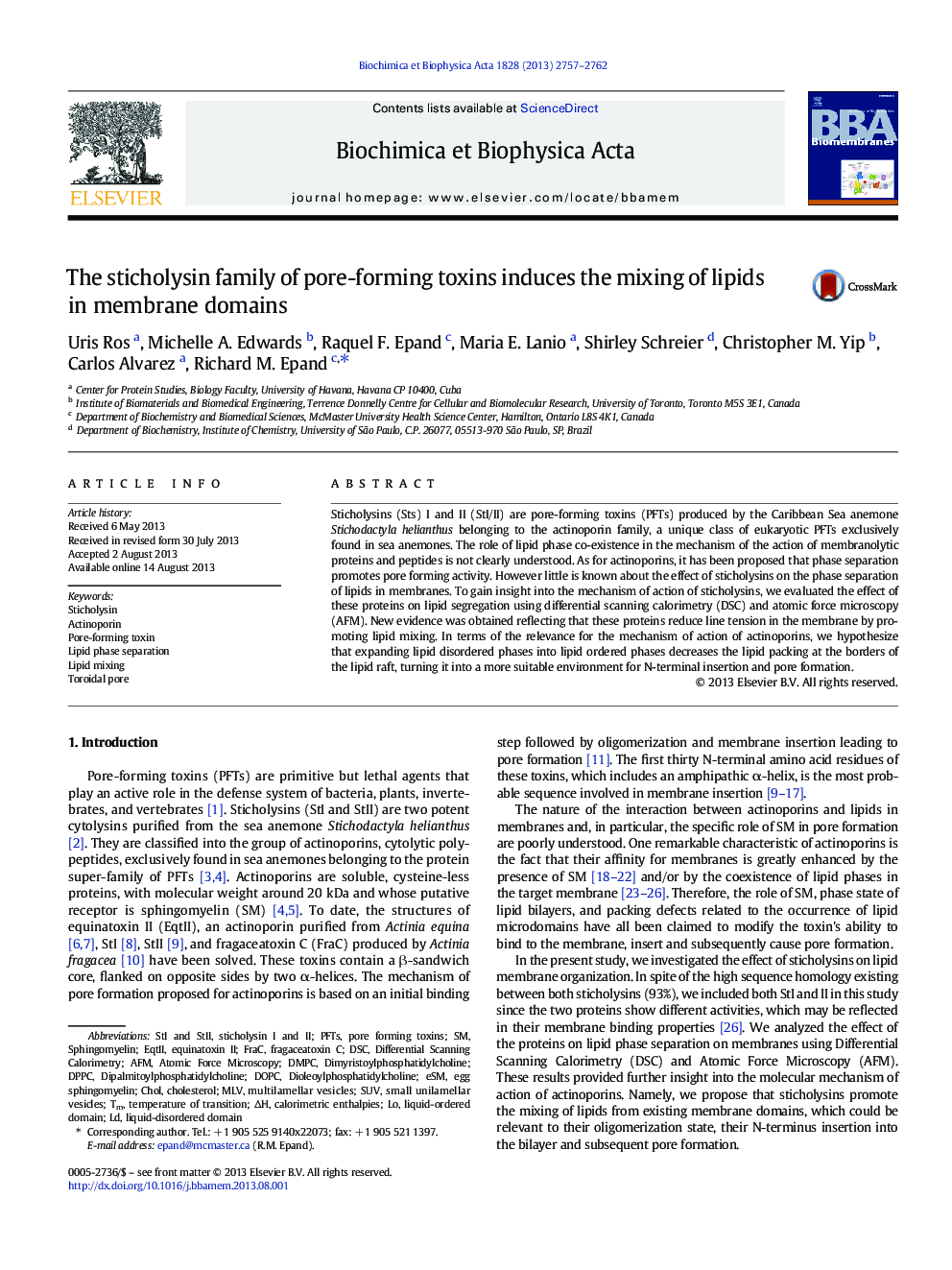| Article ID | Journal | Published Year | Pages | File Type |
|---|---|---|---|---|
| 1944321 | Biochimica et Biophysica Acta (BBA) - Biomembranes | 2013 | 6 Pages |
•Lipid heterogeneity and phase separation favor sticholysins' binding.•Sticholysins reduce the line tension in membrane by promoting lipid mixing.•Combination of AFM and DSC supports a model for the action of sticholysins.
Sticholysins (Sts) I and II (StI/II) are pore-forming toxins (PFTs) produced by the Caribbean Sea anemone Stichodactyla helianthus belonging to the actinoporin family, a unique class of eukaryotic PFTs exclusively found in sea anemones. The role of lipid phase co-existence in the mechanism of the action of membranolytic proteins and peptides is not clearly understood. As for actinoporins, it has been proposed that phase separation promotes pore forming activity. However little is known about the effect of sticholysins on the phase separation of lipids in membranes. To gain insight into the mechanism of action of sticholysins, we evaluated the effect of these proteins on lipid segregation using differential scanning calorimetry (DSC) and atomic force microscopy (AFM). New evidence was obtained reflecting that these proteins reduce line tension in the membrane by promoting lipid mixing. In terms of the relevance for the mechanism of action of actinoporins, we hypothesize that expanding lipid disordered phases into lipid ordered phases decreases the lipid packing at the borders of the lipid raft, turning it into a more suitable environment for N-terminal insertion and pore formation.
Graphical abstractFigure optionsDownload full-size imageDownload high-quality image (120 K)Download as PowerPoint slide
